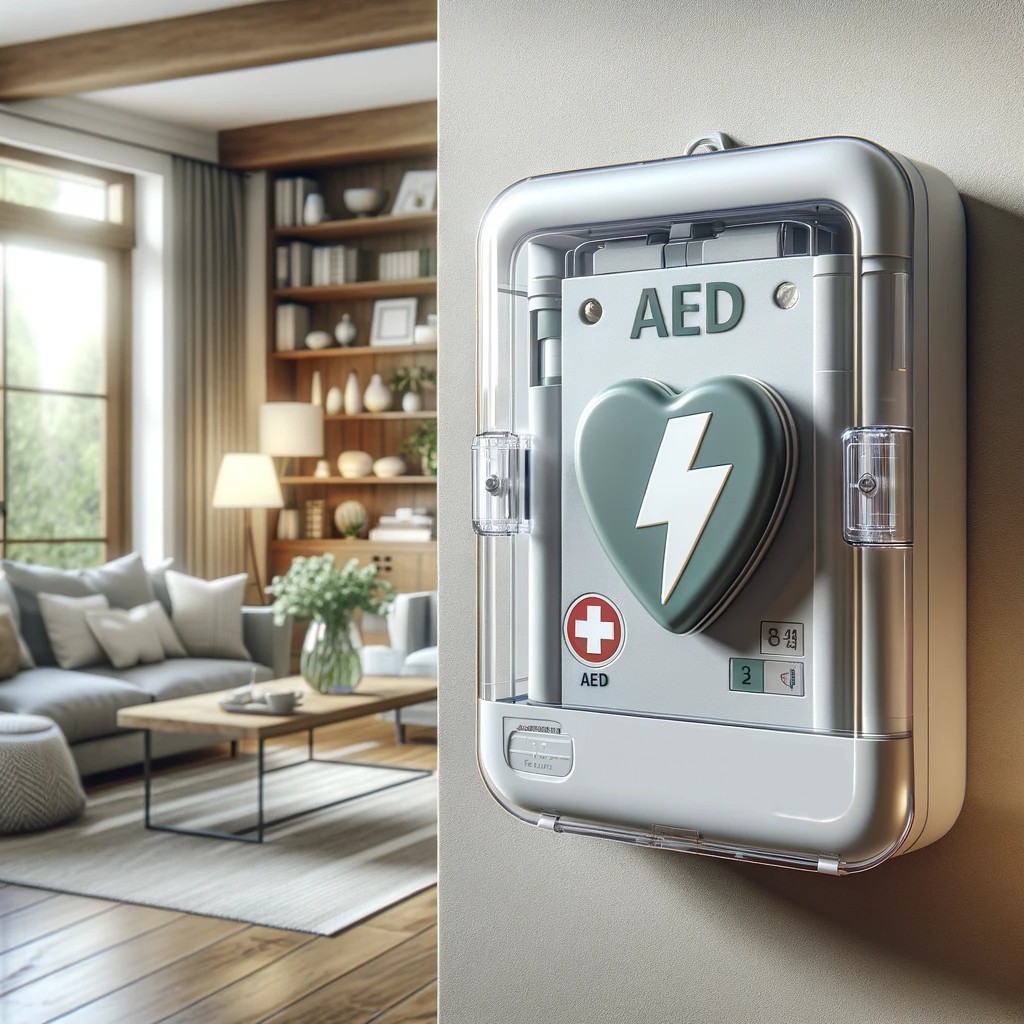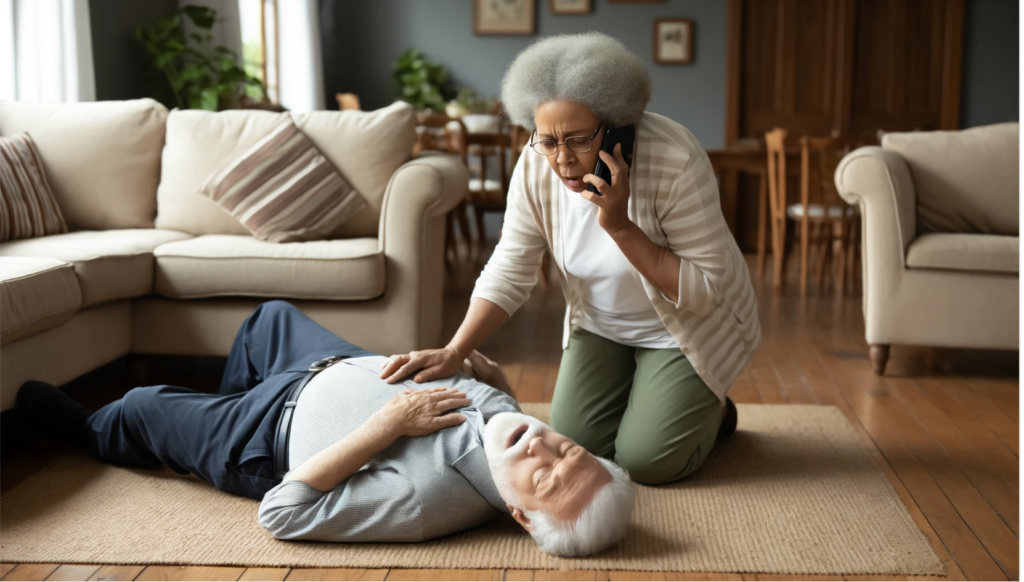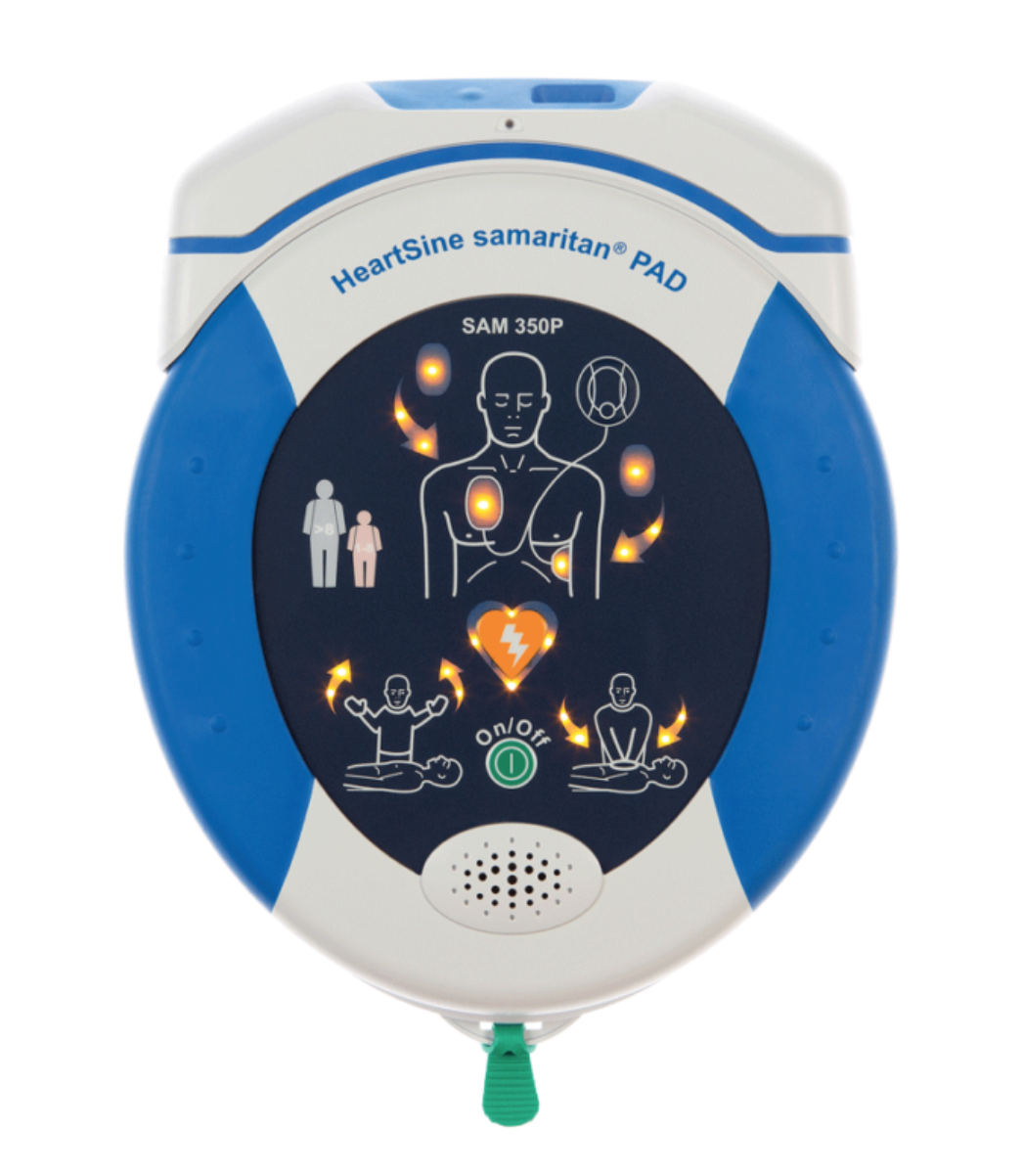
You might have heard of AEDs in the workplace, but more people are now questioning whether they should buy home defibrillators.
Have you ever found yourself thinking about the what-ifs of a heart-stopping moment? Picture this: a loved one, life’s vibrant rhythm suddenly stilled. It’s no scene from a movie; it’s the stark reality that cardiac arrests paint in homes like yours.
We’ve all heard the clock ticking on emergency response times. But did you know there’s something powerful enough to turn back those hands?
I’m talking about Automated External Defibrillators (AEDs) – your potential home heroes waiting quietly for their call to action. They’re simple, they save lives, and guess what? You could have one at arm’s reach; now is the time to consider buying a defibrillator for your home.
You’ll soon discover why these devices are game-changers and how picking the right AED machine can feel less like shopping and more like empowering your household with its own guardian angel.
Table of Contents
- Understanding AED Machines for Home Use
- Evaluating the Philips HeartStart Onsite AED
- Assessing the HeartSine Samaritan 350P AED
- Comparing Philips HeartStart and HeartSine Samaritan AEDs
- The Benefits of Buy a Defibrillator for Home
- Financial Considerations for AED Purchase
- Cardiac Arrest Statistics and the Need for Home AEDs
- Emergency Response Times vs. Home AED Intervention
- FAQs about How to Buy Defibrillator for Home
- Conclusion
Understanding AED Machines for Home Use

An AED, or automated external defibrillator, can differentiate between life and death when seconds count. These devices are designed to deliver an electric shock through the chest to the heart, potentially stopping an irregular heartbeat and allowing a normal rhythm to resume following sudden cardiac arrest (SCA). These devices are made so that even people with no medical knowledge can easily use them, making the difference between life and death in crucial moments.
In case you didn’t know—and this might just blow your mind—cardiac arrests aren’t picky about where they happen; homes are common arenas for these emergencies. Think about it: You’re more likely at home than anywhere else.
And here’s another kicker: every minute without CPR or defibrillation decreases survival chances by 7-10%. Now consider average ambulance response times vary widely but often exceed those precious minutes—that’s why having an AED close by at home isn’t just smart; it’s potentially life-saving.
Evaluating the Philips HeartStart Onsite AED
The Philips HeartStart Onsite AED is a reliable guardian for your loved ones’ safety. This small but powerful device has features that enable quick response during critical moments, ensuring prompt action in emergencies.
The Philips HeartStart Onsite has a simple interface with clear visuals and audio instructions, making it easy for anyone without experience to administer life-saving actions.
This device’s ‘Ready-Pack’ feature makes it exceptionally convenient, especially for those who struggle with emergency preparedness. With easy-to-follow voice instructions, it guides you through CPR and AED usage, offering support during crucial moments. Its simplicity and reassurance are what set it apart from the rest.
The best part? The device performs regular self-tests to ensure it is working properly and “rescue-ready.”
We all tend to overlook the importance of regularly testing our smoke alarms. But with this intelligent device, you can rest assured that you won’t be frantically searching for a solution during an emergency. This AED guarantees your tranquility by being readily available when it matters most.
Assessing the HeartSine Samaritan 350P AED
The HeartSine Samaritan 350P is an FDA-approved AED that brings peace of mind, merging simplicity with cutting-edge technology. Its compact design might fool you, but don’t be misled; this device is built to jump into action when seconds count.
User-friendliness sits at the core of the HeartSine Samaritan’s design. It guides rescuers with clear audio and visual prompts through each step—because during a cardiac emergency, clarity isn’t just nice to have; it’s critical. This model also includes a Pediatric-Pak™ for safe use on children, making it an all-around family-friendly choice.
This device features a sophisticated and sleek design, with a remarkably light weight of only 2.4 pounds, enhancing its ease of use and storage. It serves as an unobtrusive yet vital tool in emergencies. Its availability in instances of Sudden Cardiac Arrest (SCAR) is crucial, potentially increasing survival rates significantly. This aspect is particularly important considering the data indicating high SCAR occurrences in residential settings.
Comparing Philips HeartStart and HeartSine Samaritan AEDs
When you buy a defibrillator for home use, you want reliability, strength, and simplicity in high stress. Let’s discuss two giants: the Philips HeartStart Onsite AED and the HeartSine Samaritan 350P AED. Both are top-notch lifesavers that don’t require a prescription.
Feature Showdown: Usability & Technology
The Philips HeartStart offers Life Guidance voice prompts, which provide step-by-step voice instructions for defibrillation to anyone, even those without training. It’s like having a GPS guiding you through rush-hour traffic. On the other hand, the compact design of the HeartSine Samaritan means it won’t be an eyesore or take up much space on your shelf. It’s as convenient as stashing away a paperback book instead of a bulky encyclopedia.
Maintenance Made Easy
You’ve got enough on your plate without worrying about device upkeep. The Philips unit pings you with maintenance reminders while its battery lasts up to four years—like getting text alerts before your car runs out of gas. In contrast, checkups for the HeartSine can feel seamless since it integrates both pads and batteries into one replaceable cartridge—you swap them out together as easily as changing a printer ink cartridge.
Hearing From Those Who Know Best: Customer Feedback
Philips receives high praise from users for its user-friendly design, which is especially important in emergencies where every second counts. People also appreciate how intuitive the device feels during critical moments. The portability of Philips allows for quick and easy access when time is of the essence, and lives are at stake.
The Benefits of Buy a Defibrillator for Home
Imagine your home as a tiny, private emergency room. Now, that might sound like overkill until you realize that more than 350,000 cardiac arrests occur outside of the hospital each year—and many right in the living room. Being a CPR hero is much easier with a defibrillator on hand, such as the Philips HeartStart Onsite AED or the HeartSine Samaritan 350P AED.
When every second counts, an ambulance can feel like it’s moving at a snail’s pace, the average person might wait up to 8 to 14 minutes for medical professionals, but with an AED within arm’s reach, you could deliver life-saving treatment faster than microwave popcorn pops.
Apart from being real-life save-the-day gear, these devices are no rocket science project designed for ease and quick action. Plus, let’s talk turkey—money matters. These machines qualify under FSA/HSA plans, which is quite handy because while you can’t put a price on life, budgets aren’t infinite either.
Financial Considerations for AED Purchase
To buy a defibrillator for a home isn’t just about ticking a box on the safety checklist—it’s also a smart financial move. Think of investing in peace of mind with a savvy spending strategy.
First off, let’s talk price tags. While you might be tempted to think these life-saving devices will break the bank, models like the Philips HeartStart Onsite AED and HeartSine Samaritan 350P are available without smashing your piggy bank. Sure, they’re not exactly impulse buys, but considering their role during cardiac emergencies, they’re worth every penny.
Besides, here’s where things get interesting: did you know that AEDs can be eligible expenses under FSA/HSA plans? That’s right. You can use pre-tax dollars from Flexible Spending Accounts or Health Savings Accounts to buy one—talk about an unexpected plot twist in health finance.
To sweeten the pot even more, owning an AED could mean dodging some long-term costs associated with emergency medical services during a heart-stopping moment at home. When every second counts before help arrives—which can take longer than we’d all prefer—an immediate shock from your AED defibrillator might make all the difference.
Cardiac Arrest Statistics and the Need for Home AEDs
Think about it: The heart, that relentless workhorse of our bodies, doesn’t ask for a day off. But sometimes, it hits an unexpected snag—cardiac arrest. Your body’s electrical system suddenly throws in the towel without notice.
Statistics show that over 350,000 cardiac arrests occur outside of hospitals each year in the U.S., with a whopping 70% happening at home. Now let this sink in: If you’re betting on ambulance sirens to swoop in as the cavalry just in time—you might want to rethink those odds. Ambulances have speed and sirens but can’t beat traffic constantly; we’re talking an average response time ranging from seven to 14 minutes, depending on where you live.
This is where buying a defibrillator for the home comes into play—a life-saver right in your hallway closet or mounted by your kitchen fridge. Because when seconds count, you could be flipping a coin with someone’s survival chances if waiting for professional help rather than taking action yourself. Plus, these AED packages are eligible for FSA/HSA.
Emergency Response Times vs. Home AED Intervention
Imagine you’re cooking dinner, and suddenly, a family member collapses. Your mind races as you dial 911, but even the fastest emergency teams can face delays.
In urban areas, ambulances can take an average of 8 to 14 minutes to reach a cardiac arrest victim—a time that is not on your side when every second counts. Rural locations have it worse; wait times sometimes balloon to over half an hour. This is where having a home Automated External Defibrillator (AED) becomes more than just convenient—it’s potentially life-saving.
A study showed immediate defibrillation could skyrocket survival rates by nearly 70% if done within the first few minutes of cardiac arrest. Now picture this: With a Philips HeartStart or HeartSine Samaritan AED tucked away at home, you become the front-line hero who jumps into action while those sirens are still blocked away. And because these devices come without prescription requirements and qualify under FSA/HSA plans—they’re ready for homes like yours where they could make all the difference between life and pause.
Got a home AED? You could boost survival from cardiac arrest by 70% before the ambulance arrives. #HeartHero #SaveLives Click to Tweet
FAQs about How to Buy Defibrillator for Home
Is it worth buying a defibrillator for the home?
Absolutely. Quick access to an AED at home can be a game-changer during sudden cardiac arrest, significantly upping survival chances.
How much does a home defibrillator cost?
Home defibrillators typically run from $1,200 to $2,000. Prices vary based on features and brand reputation.
Can you get a defibrillator in your house?
Sure thing. Anyone can purchase a defibrillator package for their home. No medical prescription is needed.
Can civilians own an AED?
You bet—they’re legal for civilian use. Owning one means jumping into action if the heart stops playing nice.
Conclusion
Bringing it all home, you embrace peace of mind when you buy a defibrillator for home use. You’ve learned how AEDs are lifesavers and why the Philips HeartStart Onsite and HeartSine Samaritan 350P stand out.
Consider the facts: quick action beats waiting for help; owning an AED could mean beating the odds. Think about cost not as an expense but as an investment in health.
Weigh your options, understand features versus needs, and then take that step. Remember this – having an AED at hand isn’t just smart; it’s a heartfelt commitment to safety.
You’re now set to make informed choices because every second counts, and knowledge empowers. Equip your space with more than comfort – add care that counts.
Whether you want to buy a defibrillator for home use or invest in a business AED or AED supplies/AED accessories, contact us at www.emccprtraining.com/contact or 800-695-5655 to learn about our onsite CPR/AED training and AED sales.
Our inventory includes a comprehensive range of FDA-approved Automated External Defibrillators (AEDs), featuring models such as Defibtech Lifeline AED, Defibtech Lifeline VIEW, HeartSine Samaritan PAD (models 350, 360, and 450P), ZOLL AED, Cardiac Science Powerheart, both Philips HeartStart FRx AED and HeartStart Onsite AED, and Physio-Control LIFEPAK CR Plus, among others. We offer free shipping on all AED orders. Our dedicated customer care team is available to assist you with your needs.
Contact us at www.emccprtraining.com or 800-695-5655.


.png)

